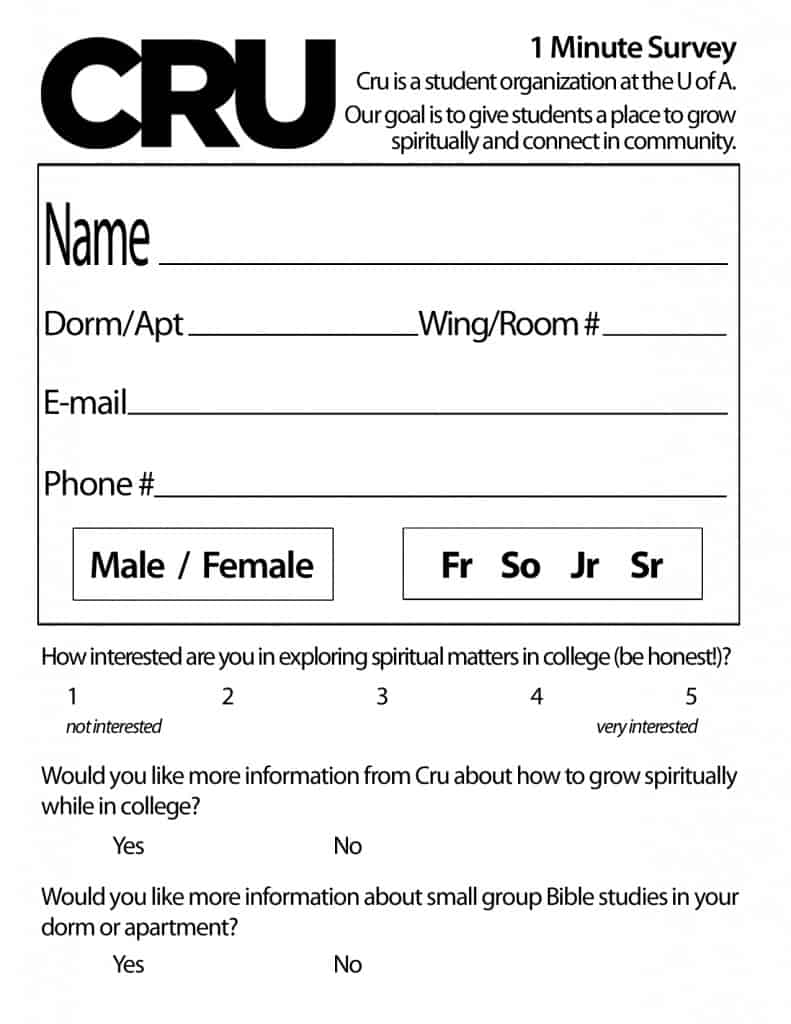Here at the University of Arkansas, pretty much everything we do in the first week to reach freshmen was gleaned from Brian McCollister. Brian is a national director with Cru who is one of the best in the world at reaching freshmen and building a movement. He served for over 20 years as a Campus Director at Ohio University.
The basics we do to reach freshmen the first week:
- During move-in week we have big cookouts in front of the big freshmen dorms (and have them fill out a spiritual interest survey as they get a burger)

- On the first day of school we set up tables in front of every dining hall on campus. We hand out something free (sunglasses, free sandwich coupon, etc.) in exchange for students filing out a spiritual interest survey (click here to download a sample jpg or Photoshop file you can adapt for your use). Between the Cookouts and Tables we do about 4,000 of these spiritual interest surveys.
- Have co-ed Bible studies in every dorm the first week of class
Here’s the key: our staff and student leaders then follow up, one-on-one, with as many of these students as possible. We share the gospel during EVERY appointment and work hard to connect these freshmen to Bible studies. In the previous spring most of our leaders had been through training on how to share their faith. We share the gospel with every student, despite the fact that our University is in the “Bible Belt,” because the vast majority of students do not have a clear understanding of the gospel of grace. Many times we see students trust Christ for the first time.
Here is much of Brian’s wisdom on the critical first weeks of reaching freshmen – Â in 2 parts:
- AÂ 15 minute talk from Brian McCollister walking through how to reach freshmen the first few weeks. You can download here.
- A step by step of how to reach freshmen. This how-to was put together by St. Louis Cru which is great because it applies to the wide variety of contexts they serve in (community colleges, elite private schools, large state schools). It’s not exactly what we do at Arkansas, but very close.
https://www.timcasteel.com/wp-content/uploads/2014/07/CompassionfortheCrowds.pdf
Both of these are great resources to walk through with your staff team.




